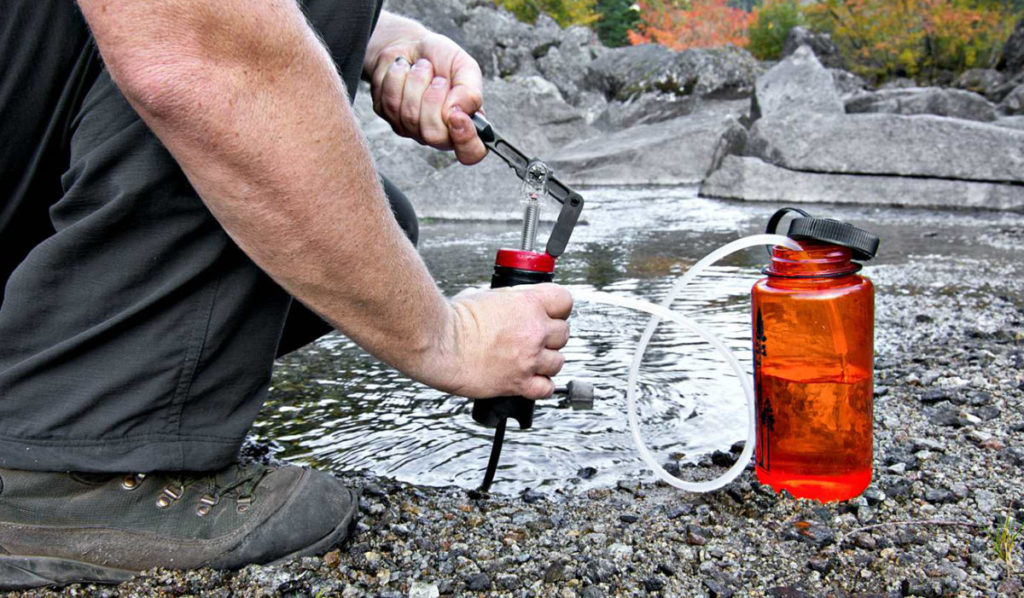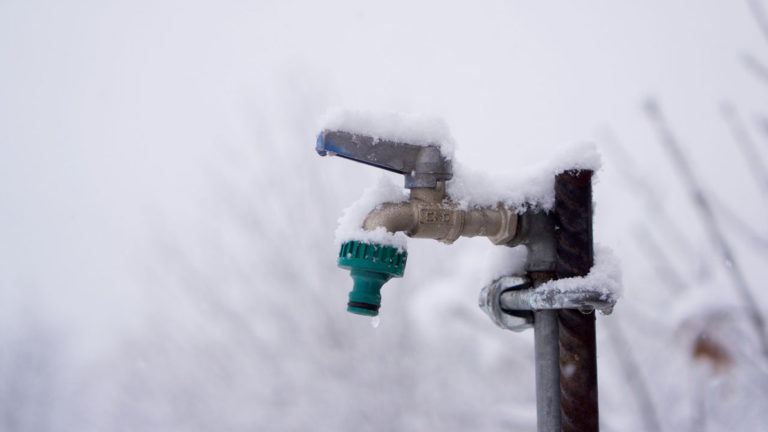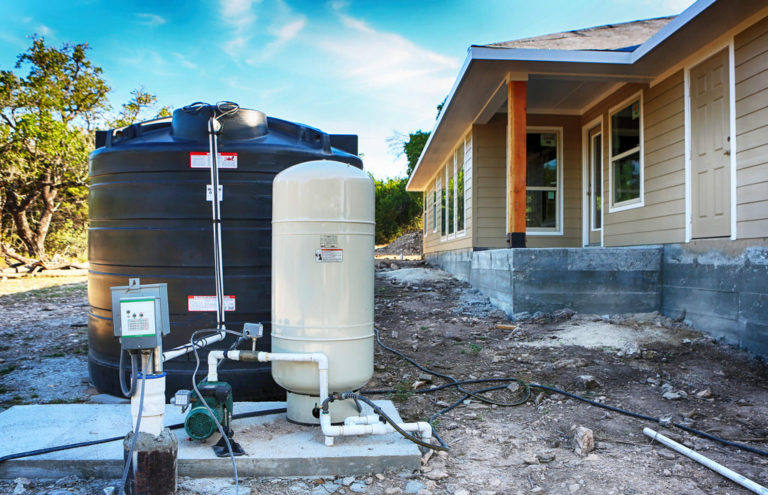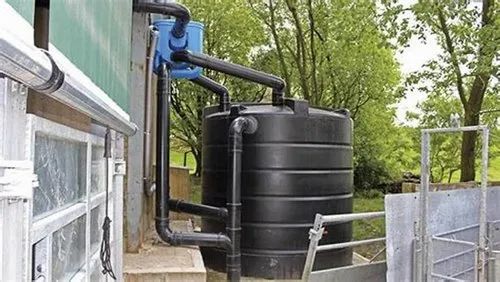When it comes to surviving off the grid, access to clean drinking water is essential.
But what if you don’t have a reliable source of potable water?
That’s where these DIY water purification methods come in.
With just a few simple materials, you can create your own water filtration system and enjoy safe, delicious drinking water no matter how remote or disconnected from society you are.
Whether you’re living off the grid full-time or just want to be prepared for emergencies, these DIY methods will help you take control of your water supply and ensure that you always have access to clean, healthy drinking water.
Let’s dive in and explore some effective and easy-to-use purification techniques so you can enjoy the freedom of off-grid living with peace of mind.
Sedimentation
Use a sedimentation basin or a simple container with a lid to allow the heavier particles to settle to the bottom, leaving clearer water on top.
Both of these options allow the heavier particles to settle to the bottom, leaving cleaner water on top.
In a sedimentation basin, the water flows into the basin and the heavier particles such as silt, clay, and other impurities settle to the bottom.
The clearer water then exits the basin, leaving the sediment behind.
In a simple container with a lid, the water is poured into the container and the heavier particles settle to the bottom as the water is stirred or shaken.
Once the container is left to sit for a period of time, the heavier particles will have settled to the bottom, leaving the cleaner water on top.
Both of these methods are effective ways to clarify water and can be used for a variety of applications, including agricultural and industrial uses.
Filtration
Use a filtration system such as a ceramic or carbon filter to remove impurities from the water. You can make your own filter using materials like sand, gravel, and activated charcoal.
Using a filtration system, such as a ceramic or carbon filter, is an effective way to remove impurities from your water.
These systems work by forcing the water through a series of membranes or granules that trap and remove impurities, resulting in cleaner and healthier drinking water.
You can even make your own filter using materials like sand, gravel, and activated charcoal.
For example, you can create a simple filter using a bucket and a series of filters made from these materials, which can be placed in a specific order to remove different types of impurities.
This can be a cost-effective and empowering way to take control of your water quality and ensure that you have access to clean drinking water.
Ceramic filters are particularly effective at removing bacteria, viruses, and other microorganisms from water, while carbon filters are better at removing chemicals and impurities.
By using a filtration system, you can rest assured that your water is safe to drink and that you are protecting your health.
Boiling
Boiling water is a simple and effective way to kill bacteria and other pathogens. Bring the water to a rolling boil for at least 1-3 minutes to ensure purity.
Boiling water is a simple yet powerful method for eliminating harmful bacteria and pathogens from your drinking water.
To ensure the highest level of purity, bring your water to a rolling boil for at least 1-3 minutes.
During this time, the heat from the boiling water will kill off any harmful microorganisms that may be present, making the water safe to drink.
This method is particularly effective against bacteria like E.
Coli, Salmonella, and Campylobacter, which are commonly found in contaminated water sources.
Boiling water can also remove other impurities such as sediment, particles, and dissolved solids, giving you a clean and refreshing drink.
By taking this simple step, you can ensure the safety of your drinking water and protect your health.
Disinfection
Use a disinfectant like bleach or iodine to kill bacteria and other pathogens. Follow the manufacturer’s instructions for proper dosage and contact time.
To effectively disinfect surfaces and eliminate harmful bacteria and pathogens, use a strong disinfectant like bleach or iodine.
These products can quickly kill a wide range of microorganisms, including viruses, fungi, and bacteria.
When using bleach, mix the solution according to the manufacturer’s instructions and apply it to the surface for the recommended contact time, typically between 1 and 10 minutes.
For iodine, follow the manufacturer’s guidelines for proper dosage and soaking time, usually between 5 and 30 minutes.
It’s essential to ensure that the solution is applied thoroughly and evenly to ensure proper disinfection.
Always rinse surfaces with clean water after disinfecting to remove any residue.
By taking these precautions, you can effectively reduce the risk of infection and maintain a clean, healthy environment.
Distillation
Use a distillation system to vaporize the water and then condense it back into a liquid, leaving impurities behind. This method is effective, but requires a distillation apparatus.
To purify water using a distillation system, you can start by vaporizing the water into a gas.
This is done by heating the water in a distillation apparatus, such as a still or a column, causing the water to evaporate and leave behind impurities.
As the vapor rises through the apparatus, it is cooled and condensed back into a liquid, leaving behind any impurities that were present in the original water.
This method is highly effective at removing impurities from water, but it does require a distillation apparatus, which can be expensive and take up a lot of space.
The distillation process can be energy-intensive, so it may not be the most sustainable option for purifying water.
However, if you have access to a distillation apparatus and the necessary resources, this method can produce high-quality purified water that is free from impurities and contaminants.
Ceramic Water Filters
Use a ceramic water filter, which can be made from a variety of materials like clay, sand, and gravel. These filters are effective at removing bacteria, viruses, and other impurities.
If you’re looking for an effective and convenient way to purify your drinking water, consider using a ceramic water filter.
These filters are made from a variety of materials, such as clay, sand, and gravel, which work together to remove bacteria, viruses, and other impurities from your water.
The ceramic filter medium is designed to capture and remove contaminants, producing clean and safe drinking water.
The benefits of using a ceramic water filter are numerous.
First, they are highly effective at removing bacteria and viruses, which can cause a range of illnesses.
Ceramic filters can remove other impurities such as chemicals, heavy metals, and parasites, ensuring that your water is safe to drink.
Another advantage of ceramic water filters is their long-lasting nature.
Unlike some other types of water filters, ceramic filters can be used for thousands of liters of water before they need to be replaced.
This makes them a cost-effective solution for those who want a reliable source of clean drinking water.
In addition, ceramic water filters are easy to use and maintain.
Simply fill the filter with water, and the impurities will be captured and removed as the water flows through the filter.
With proper care and maintenance, your ceramic water filter can provide years of reliable service.
Overall, a ceramic water filter is a smart investment for anyone looking for a safe and convenient way to purify their drinking water.
With their high effectiveness, long-lasting nature, and ease of use, these filters are an excellent choice for anyone looking to improve their health and well-being.
Solar Disinfection (SODIS)
Use the sun’s UV rays to disinfect the water by placing it in a clear plastic bottle and exposing it to direct sunlight for at least 6 hours. This method is effective, but requires consistent sunlight.
Using the sun’s UV rays to disinfect water is a simple yet effective method that can be implemented in various situations.
To do this, place the water in a clear plastic bottle and expose it to direct sunlight for at least 6 hours.
The UV rays from the sun will kill any harmful bacteria, viruses, and other microorganisms that may be present in the water.
This method is effective because UV light has been shown to be a powerful disinfectant, and the clear plastic bottle allows the UV light to penetrate and reach the water.
However, it is important to note that this method requires consistent sunlight to work effectively.
If the sun is not shining, or if the water is not exposed to direct sunlight for the full 6 hours, the disinfection process may not be complete.
This method may not be effective in areas with limited sunlight or during periods of reduced sunlight, such as during the winter months.
In these cases, alternative disinfection methods may be more appropriate.
Overall, using the sun’s UV rays to disinfect water is a straightforward and low-cost method that can be useful in a variety of situations.
With consistent sunlight and proper exposure, this method can be effective in killing harmful microorganisms and making the water safe to drink.
Iodine Purification
Use iodine tablets or liquid to purify the water. Add the proper dosage of iodine to the water and let it sit for the recommended amount of time before drinking. This method is effective, but requires careful dosing and contact time.
When it comes to purifying water, iodine tablets or liquid are a reliable and effective method.
Iodine is a disinfectant that is toxic to bacteria, viruses, and fungi, making it an ideal choice for killing pathogens in water.
To use iodine tablets or liquid, simply add the proper dosage to the water and let it sit for the recommended amount of time before drinking.
The dosage and contact time will vary depending on the type of iodine and the quality of the water, so be sure to follow the manufacturer’s instructions carefully.
To purify water with iodine tablets or liquid, you will need to add the proper dosage to the water.
The recommended dosage will depend on the type of iodine you are using and the quality of the water.
In general, a dosage of 8-10 drops of liquid iodine or 1-2 tablets per gallon of water is sufficient for disinfecting water.
Let the water sit for at least 30 minutes to an hour after adding the iodine to ensure that the pathogens have been killed.
It’s important to note that iodine tablets or liquid must be used carefully and with precise dosing and contact time to be effective.
Overdosing the water with iodine can be dangerous, so it’s essential to follow the manufacturer’s instructions carefully.
Iodine may not be effective against certain types of pathogens, such as Cryptosporidium and Giardia, so it may not be the best method for purifying water in all situations.
However, when used correctly, iodine tablets or liquid can be a reliable and effective method for disinfecting water.]]] Using iodine tablets or liquid to purify water can be an effective method for disinfecting water, but it’s important to use them carefully and with precise dosing and contact time to be effective.
The recommended dosage of iodine will depend on the type of iodine being used and the quality of the water.
In general, a dosage of 8-10 drops of liquid iodine or 1-2 tablets per gallon of water is sufficient for disinfecting water.
It’s important to follow the manufacturer’s instructions carefully, as overdosing the water with iodine can be dangerous.
Iodine may not be effective against certain types of pathogens, such as Cryptosporidium and Giardia, so it may not be the best method for purifying water in all situations.
It’s important to test the water regularly and use multiple methods of purification for best results.
Want More? Dive Deeper Here!
Hey there! If you’re the type who loves going down the rabbit hole of information (like we do), you’re in the right spot. We’ve pulled together some cool reads and resources that dive a bit deeper into the stuff we chat about on our site. Whether you’re just killing time or super into the topic, these picks might just be what you’re looking for. Happy reading!
- Water filter uses sunlight to remove lead and other contaminants- Princeton Engineering
- From seawater to drinking water, with the push of a button | MIT News | Massachusetts Institute of Technology
- Solar-powered system offers a route to inexpensive desalination | MIT News | Massachusetts Institute of Technology
- in.nau.edu | Northern Arizona University






